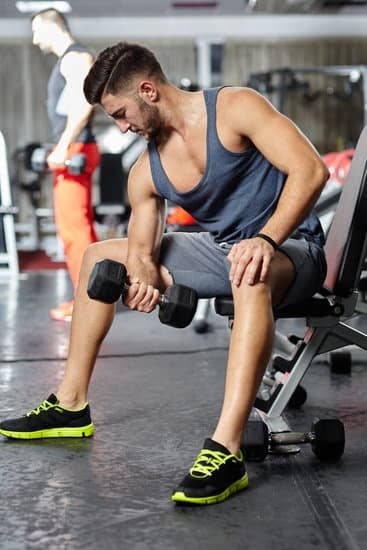Getting fit and toned is a goal that many individuals strive for, as it not only improves overall health but also boosts confidence. In today’s fast-paced world, maintaining a fit and toned body is more important than ever, as it promotes longevity, reduces the risk of chronic diseases, and enhances mental well-being.
Achieving a fit and toned body goes beyond just physical appearance. It signifies a commitment to taking care of oneself and prioritizing personal health. Regular exercise not only helps to manage weight but also strengthens muscles and improves cardiovascular health. Additionally, being fit and toned can increase energy levels, improve sleep quality, reduce stress levels, and enhance overall quality of life.
In addition to these physical benefits, reaching your fitness goals can have a significant impact on self-esteem and confidence. The sense of accomplishment that comes with improving fitness levels and sculpting your body can boost self-confidence in various aspects of life. Feeling strong physically often translates into feeling empowered mentally, leading to increased productivity and success in other areas.
Throughout this article, we will delve into the importance of getting fit and toned for both overall health and confidence. We will explore how setting achievable fitness goals can drive progress towards our desired results. Furthermore, we will discuss the benefits of incorporating cardiovascular exercises, strength training routines, flexibility exercises into our workout plans to maximize results. Stay tuned for expert tips on nutrition recommendations alongside guidance on staying motivated along your fitness journey.
Setting Your Fitness Goals
When embarking on a fitness journey, it is crucial to set clear goals to keep yourself motivated and on track. Defining what “fit and toned” means to you personally will help you stay focused and tailor your workout routine accordingly. Here are some steps to help you set your fitness goals effectively:
- Self-reflection: Take some time to reflect on what being fit and toned means to you. Is it about having a certain body shape, feeling strong and energetic, or improving your overall health? Understanding your personal definition will give you a clear vision of what you want to achieve.
- Specificity: Once you have determined your goal, make it specific. Rather than aiming for a general idea of being fit, consider setting concrete targets such as losing a certain amount of body fat, being able to complete a specific exercise or achieving a particular level of strength or endurance.
- Realistic and Achievable: It’s important to set goals that are both attainable and realistic for your current fitness level. Setting unrealistic expectations can lead to disappointment and frustration. Consider factors such as your age, current physical condition, time availability for workouts, and any restrictions or limitations that may affect your progress.
To further enhance the effectiveness of setting fitness goals, consider creating a plan that includes short-term milestones leading up to your long-term goal. This will give you a sense of accomplishment along the way and help maintain motivation.
Additionally, tracking your progress is essential in monitoring how far you have come towards reaching your fitness goals. Keep a journal or use apps/tools that allow you to record relevant data such as measurements, weight loss/gain, strength gains, or improvements in endurance.
Remember that everyone’s fitness journey is unique, so compare yourself only with yourself rather than others’ progress or standards. By setting personalized goals that align with your definition of fitness and consistently working towards them, you will be well on your way to achieving a fit and toned body.
Understanding the Benefits of a Combination Workout Routine
The Importance of Cardiovascular Exercise
Cardiovascular exercise, also known as aerobic exercise, plays a crucial role in any fitness routine. Not only does it improve your heart health and increase stamina, but it also helps to burn calories and promote weight loss. Engaging in cardiovascular activities regularly can help you achieve a fit and toned body by reducing body fat and increasing muscle definition.
There are various types of cardiovascular exercises to choose from, depending on your preference and fitness level. Running, swimming, cycling, and HIIT workouts are all excellent options for improving endurance and burning calories. The key is to find an activity that you enjoy so that you can stay motivated and committed to your workout routine.
Building Lean Muscle with Strength Training
Strength training is another essential component of getting fit and toned. While cardio exercises burn calories, strength training helps to build lean muscle mass. This not only gives your body a more sculpted appearance but also increases your metabolism, allowing you to burn more calories throughout the day.
Weightlifting, bodyweight exercises, and resistance bands are all effective ways to engage your muscles and promote muscle growth. It’s important to focus on targeting different muscle groups during your strength training sessions to ensure balanced development. By incorporating a variety of exercises such as squats, lunges, push-ups, and bicep curls into your routine, you can tone specific areas of your body while improving overall strength.
The Benefits of Flexibility Training
Flexibility training often gets overlooked in many fitness routines; however, it plays a vital role in achieving overall fitness and preventing injuries. Stretching exercises not only improve flexibility but also help enhance mobility and range of motion in joints. This is particularly important for individuals who engage in strength training or other high-intensity workouts.
By incorporating regular stretching into your workout routine, you can reduce muscle tension and soreness, enhance athletic performance, and improve posture. Yoga is an excellent form of exercise that combines strength, flexibility, and mindfulness. Participating in a yoga class or incorporating yoga poses into your routine can bring about numerous benefits for both your physical and mental well-being.
Creating a Balanced Fitness Plan
Designing a well-rounded workout routine is essential for achieving overall fitness and getting a fit and toned body. By incorporating aerobic exercises, resistance training, and stretching into your fitness plan, you can improve cardiovascular health, build strength and muscle tone, and enhance flexibility. This section will guide you on how to create a balanced fitness plan that covers all these important aspects.
To design a balanced fitness plan, it is important to include the following components:
- Aerobic Exercises: Aerobic exercises are essential for improving cardiovascular health, increasing endurance, and burning calories. Consider including activities such as running, swimming, cycling, or dancing in your routine. These exercises get your heart rate up and provide numerous benefits for stamina and weight management.
- Resistance Training: Resistance training helps to build strength, tone muscles, and increase metabolism. Include exercises that target major muscle groups such as squats, lunges, push-ups, deadlifts, or using resistance bands or weights. Aim to work each muscle group at least twice a week with adequate rest in between.
- Stretching and Flexibility Exercises: Flexibility training should never be overlooked as it helps to improve range of motion, prevent injuries, and enhance performance in other areas of your workout routine. Incorporate dynamic stretches before exercise to warm up your muscles and static stretches after exercise to cool down. Examples include yoga poses like downward dog or child’s pose.
By combining these three components in your fitness plan – aerobic exercises for cardiovascular endurance, resistance training for strength-building and toning muscles, plus flexibility exercises for improved mobility – you can achieve a well-rounded workout routine that supports your goal of getting fit and toned.
Remember to choose activities that you enjoy so that you are more likely to stick with them consistently. Mix up your workouts to avoid boredom or plateauing by trying different types of cardio exercises or switching up resistance training techniques. With dedication and consistency in following your balanced fitness plan, you will be on your way to achieving the fit and toned body you desire.
Effective Cardiovascular Exercises for Getting Fit
Cardiovascular exercises play a crucial role in achieving a fit and toned body. These activities not only help improve endurance and burn calories but also contribute to overall cardiovascular health. Here are some effective cardiovascular exercises that you can incorporate into your fitness routine:
Running
Running is a highly versatile and accessible form of cardio exercise that can be done anywhere, from the great outdoors to the comfort of your own home on a treadmill. It helps strengthen your legs, improves cardiovascular endurance, and burns a significant number of calories. To maximize the benefits of running, vary your speed by incorporating intervals of fast-paced sprints and slower-paced recovery jogs.
Swimming
Swimming is a low-impact exercise that works out multiple muscle groups while providing an excellent cardiovascular workout. It increases lung capacity, tones muscles throughout the body, and can be particularly beneficial for those with joint or muscle injuries. Consider swimming laps, participating in water aerobics classes, or even trying out underwater interval training for an added challenge.
Cycling
Whether you prefer outdoor biking or indoor cycling classes, cycling is a fantastic way to improve cardiovascular fitness. It strengthens the lower body muscles, especially the quadriceps and glutes, while burning calories and increasing stamina. If you’re looking for something more intense, consider trying out spin classes that incorporate high-intensity intervals or taking on challenging outdoor terrains.
HIIT Workouts
High-Intensity Interval Training (HIIT) workouts are becoming increasingly popular due to their ability to deliver quick results in terms of burning calories and improving overall fitness levels. These workouts involve short bursts of intense exercise followed by brief periods of rest or active recovery. HIIT exercises can be customized based on individual preferences and fitness levels but often include exercises such as burpees, squat jumps, mountain climbers, and high knees.
Incorporating a variety of cardiovascular exercises into your fitness routine not only helps keep you motivated but also ensures that you are working different muscle groups and challenging your body in different ways. Remember to choose activities that you enjoy, as this will increase the likelihood of sticking to your workout plan.
Consistency is key when it comes to achieving a fit and toned body through cardiovascular exercise, so make sure to find a routine that works for you and gradually increase intensity as your fitness level improves.
Strength Training for Toning Muscles
One essential component of a well-rounded fitness routine is strength training. Strength training involves using resistance to build and tone muscles, leading to increased strength, definition, and overall fitness. Incorporating strength training exercises into your workout routine not only helps you achieve a more toned appearance but also provides numerous health benefits.
Here are some examples of effective strength training exercises that can help you tone your muscles:
- Weightlifting: Using dumbbells or barbells, you can perform exercises like bicep curls, shoulder presses, and squats. These exercises target specific muscle groups and help increase muscle mass and definition.
- Bodyweight Exercises: No equipment? No problem. Bodyweight exercises like push-ups, squats, lunges, and planks use your own body weight as resistance to strengthen and tone multiple muscle groups simultaneously.
- Resistance Bands: Resistance bands are a versatile tool that can be used for a variety of strength exercises. They provide constant tension throughout the movement, helping to engage the muscles effectively. Try exercises like band rows, banded squats, or lateral band walks to target different muscle groups.
Incorporating these strength training exercises into your fitness routine will not only improve your muscle tone but also increase your metabolism and bone density while enhancing your overall strength and endurance.
Remember to start with lighter weights or lower resistance if you are new to strength training and gradually increase as you become more comfortable with the movements. It’s also important to maintain proper form throughout each exercise to prevent injuries.
Strength training should be done at least two to three times a week on non-consecutive days to allow adequate recovery time for the muscles. Additionally, don’t forget to warm up before each session by performing dynamic stretches and cool down afterward with static stretches to prevent muscle soreness and reduce the risk of injury.
By incorporating strength training exercises into your workout routine, you can sculpt and define your muscles, improve overall strength, and enhance your appearance. Whether you prefer weightlifting, bodyweight exercises, or resistance bands, make sure to choose a variety of exercises that target different muscle groups for optimal results.
Maximizing Results with High-Intensity Interval Training (HIIT)
High-Intensity Interval Training (HIIT) has gained immense popularity in recent years as an effective way to maximize results and achieve a fit and toned body. This section will explain the concept of HIIT and provide sample workouts that combine intense bursts of exercise with short recovery periods for maximum calorie burn and muscle definition.
HIIT is a form of cardiovascular exercise that involves alternating between high-intensity bursts of activity and short, active recovery periods. The intense intervals push your body to its maximum effort, while the brief recovery periods allow for some rest before the next round. This type of training elevates your heart rate, boosts your metabolism, and ultimately helps you burn more calories in a shorter amount of time compared to steady-state cardio exercises.
Sample HIIT workouts can vary depending on individual fitness levels and preferences, but they generally consist of several rounds or sets of high-intensity exercises followed by periods of active recovery or rest. For example, a basic HIIT workout could involve 30 seconds of intense exercises like burpees, jumping jacks, or squat jumps followed by 15-20 seconds of rest or slower-paced movements. This pattern is repeated for multiple rounds, typically totaling around 20-30 minutes.
| Exercise | Time/Reps | Rest |
|---|---|---|
| Burpees | 30 seconds | 15 seconds |
| Mountain climbers | 30 seconds | 15 seconds |
| Jumping lunges | 30 seconds – alternating legs | 15 seconds |
Remember, the key to an effective HIIT workout is to give it your all during the intense intervals and challenge yourself. As you progress and improve your fitness level, you can increase the duration or intensity of the high-intensity intervals.
Incorporating HIIT into your fitness routine not only helps in burning calories but also promotes muscle definition and overall cardiovascular health. It is a versatile and efficient way to achieve a fit and toned body without spending hours in the gym. However, it is essential to listen to your body, avoid overexertion, and consult with a healthcare professional before starting any new exercise regimen.
Incorporating Flexibility Training
Stretching and mobility exercises are often overlooked in fitness routines, but they play a crucial role in improving flexibility, preventing injuries, and enhancing overall performance. Flexibility training helps to lengthen and strengthen the muscles, increase range of motion, and improve posture. By incorporating stretching and mobility exercises into your workout routine, you can enhance your fitness journey and achieve a fit and toned body.
One of the main benefits of flexibility training is injury prevention. When your muscles are flexible, they are less likely to strain or tear during physical activity. Stretching helps to warm up the muscles, increase blood flow, and improve joint mobility, reducing the risk of strains or sprains. Additionally, flexibility training can also help alleviate muscle soreness after a workout by increasing blood flow and promoting quicker recovery.
Another advantage of flexibility training is improved athletic performance. When your muscles have a greater range of motion, you can move more efficiently and effectively during exercise or sports activities. This can lead to better performance in activities such as running, jumping, or weightlifting. Increased flexibility also allows for improved technique and form during exercises, which can help you lift heavier weights or perform movements with better precision.
| Benefits of Incorporating Flexibility Training |
|---|
| Injury prevention |
| Improved athletic performance |
| Enhanced muscle recovery |
| Better posture |
Moreover, incorporating stretching and mobility exercises into your fitness routine can also contribute to better posture. Many people experience poor posture due to tight muscles in the chest, shoulders, hip flexors, and back.
By regularly stretching these muscles through specific exercises like yoga poses or Pilates movements, you can improve your posture and reduce common issues such as rounded shoulders or a slouched back. Good posture not only enhances your physical appearance but also helps to prevent back pain and other related discomforts.
Nutrition Tips for a Fit and Toned Body
Nutrition plays a crucial role in achieving a fit and toned body. It is essential to fuel your body with the right nutrients to support your fitness goals. A balanced diet consisting of macronutrients (carbohydrates, proteins, and fats) and micronutrients (vitamins and minerals) is key to optimizing your workouts and maximizing results. Here are some practical tips on nutrition to help you on your journey to getting fit and toned.
Balancing Macronutrients
To support your workouts, it’s important to have a balance of carbohydrates, proteins, and fats in your diet. Carbohydrates provide energy for physical activity, while proteins are necessary for muscle repair and growth. Healthy fats help with hormone production and absorption of fat-soluble vitamins. Aim to include complex carbohydrates like whole grains, lean proteins such as chicken or tofu, and healthy fats like avocados or nuts in every meal.
Timing Your Meals
In addition to what you eat, when you eat can also impact your fitness goals. Try to consume a balanced meal or snack containing both carbohydrates and protein within 1-2 hours before exercise. This will provide the necessary fuel for your workout and prevent muscle breakdown. After a workout, it’s important to replenish glycogen stores by consuming a meal or snack within 30-60 minutes that includes carbohydrates and protein.
Hydration
Staying hydrated is essential for optimal performance during workouts. Water regulates body temperature, transports nutrients, and aids in digestion. It’s recommended to drink water consistently throughout the day and increase fluid intake during exercise sessions. If you engage in intense workouts or exercises lasting longer than an hour, consider consuming sports drinks that contain electrolytes for replenishment.
Supplementation
While it’s possible to obtain all necessary nutrients through a balanced diet alone, supplementation can be beneficial in certain circumstances. If you have specific dietary restrictions, such as being vegan or lactose intolerant, you may need to supplement certain nutrients like vitamin B12 or calcium. Additionally, if you are not getting enough nutrients from your diet alone, a multivitamin could help ensure your body receives the necessary vitamins and minerals.
Remember, nutrition is just one piece of the puzzle when it comes to achieving a fit and toned body. It works in conjunction with your workout routine to help you reach your goals. Consult with a registered dietitian or nutritionist for personalized advice and guidance tailored to your specific needs and fitness goals.
Staying Motivated and Overcoming Challenges
Maintaining motivation and overcoming challenges are crucial aspects of any fitness journey. It is common to experience ups and downs along the way, but with the right strategies and mindset, you can stay on track towards achieving your goal of getting fit and toned.
One effective strategy for staying motivated is setting specific and achievable short-term goals. Breaking down your larger fitness goal into smaller milestones can make it more manageable and give you a sense of accomplishment as you reach each milestone. Celebrate these achievements to keep your motivation high.
Another helpful tip is to find an exercise routine that you enjoy. When you genuinely enjoy the activities you are doing, it becomes much easier to stay motivated. Experiment with different types of exercises until you find something that excites you, whether it’s dancing, rock climbing, or practicing yoga. Remember that there is no one-size-fits-all approach when it comes to fitness, so focus on finding what works best for you.
Dealing with plateaus can be frustrating but understanding that they are a normal part of the fitness journey can help prevent discouragement. Plateaus occur when your body adapts to your current workout routine, leading to a decrease in progress. To overcome plateaus, consider varying your exercise routine by incorporating new exercises or increasing the intensity or duration of your workouts. Additionally, mixing up your cardio and strength training exercises can help challenge different muscle groups and keep your body guessing.
Obstacles are bound to arise during any fitness journey, but having a plan in place can help you overcome them. Develop strategies for dealing with common hurdles such as lack of time or energy. For example, if time is an issue, consider incorporating shorter workout sessions throughout the day or making use of home workout videos for convenience. If low energy levels are a challenge, prioritize getting enough sleep and fueling your body with nutritious foods to support optimal performance.
By implementing these strategies for staying motivated and overcoming challenges, you will be well-equipped to continue progressing towards your goal of getting fit and toned. Remember that setbacks are a natural part of the journey, so be kind to yourself and stay focused on the long-term benefits that maintaining a healthy and active lifestyle can bring.
Conclusion
In conclusion, achieving a fit and toned body is not only important for overall health and confidence, but it is also entirely possible with dedication, consistency, and a well-rounded workout plan. Throughout this article, we have discussed the significance of setting realistic fitness goals, understanding the benefits of a combination workout routine, and creating a balanced fitness plan.
We explored different cardiovascular exercises such as running, swimming, cycling, and HIIT workouts that can improve endurance and burn calories effectively. Additionally, we highlighted various strength training exercises including weightlifting, bodyweight exercises, and resistance bands that can sculpt and define muscles for a toned physique. It is important to remember the importance of incorporating flexibility training into your routine to improve mobility and prevent injuries.
Nutrition also plays a crucial role in achieving a fit and toned body. A balanced diet filled with the right nutrients will support your fitness goals. Fueling your body properly will optimize performance during workouts while aiding in muscle recovery and growth. Remember to prioritize whole foods such as lean proteins, fruits and vegetables, whole grains, and healthy fats.
Lastly, staying motivated and overcoming challenges are essential aspects of your fitness journey. Plateaus may occur at times, but by implementing strategies like varying your workouts or seeking support from others on similar journeys can help you push through them. Celebrate every small victory along the way to maintain motivation.
Now armed with knowledge about getting fit and toned through a balanced fitness plan encompassing cardio exercises, strength training routines, flexibility training, a proper nutrition plan alongside staying motivated throughout this progressive journey-it’s time to embark on your fitness journey. Remember that achieving your desired physique takes time; so stay dedicated through consistency in following your well-crafted workout plan designed specifically for you. Best of luck on your fitness journey.
Frequently Asked Questions
How can I get toned and fit fast?
Getting toned and fit quickly involves a combination of regular exercise, proper nutrition, and consistency. Incorporating a mix of cardiovascular exercises like running or cycling, along with strength training activities such as weightlifting or bodyweight exercises, can help you achieve faster results. High-intensity interval training (HIIT) can also be effective in burning calories and building muscle.
Additionally, following a balanced and healthy diet that includes lean proteins, fruits, vegetables, and whole grains is crucial for fueling your body and supporting muscle growth. It’s important to note that while you may see some initial changes within a few weeks, achieving significant fitness goals takes time and commitment.
How long does it take to get fit and toned?
The timeline for getting fit and toned varies from person to person based on various factors such as current fitness level, genetics, dedication, and consistency. Unfortunately, there is no fixed duration that applies universally as everyone’s body responds differently to exercise and diet.
However, with consistent effort and a well-rounded approach to fitness including regular exercise and a healthy diet, it is generally possible to notice significant improvements in your fitness level within a few months. Remember that patience is key on this journey as sustainable results often require long-term lifestyle changes rather than quick fixes.
How long does it take to get toned?
The time required to get toned depends on several factors including your starting point, the intensity of your workouts, genetic predispositions, age, gender, and overall lifestyle habits. Building tone typically involves reducing body fat percentage while increasing muscle mass for a more defined appearance. Generally speaking though, you can expect some visible toning after consistently engaging in resistance training exercises for about 4-8 weeks.
Incorporating exercises such as squats, lunges, push-ups or using weights will assist in toning muscles in specific areas of the body. However, achieving noticeable toning throughout your entire physique usually requires several months or even longer depending on individual circumstances. Consistency in both exercise routines and maintaining proper nutrition will be key to your success.

Passionate about providing useful information to anyone with an interest in the field of Personal Training, I strive to pass on to our readers quality information and to answer any questions about Personal Trainers, the work they do and how to become one.





